Choosing the ideal roofing material for a flat roof can be challenging due to limited yet extensive choices. Unlike traditional roofing materials such as asphalt shingles, tiles, and metal, the options for flat roofs include PVC, TPO, EPDM rubber, BUR, and more, each presenting unique advantages and disadvantages.
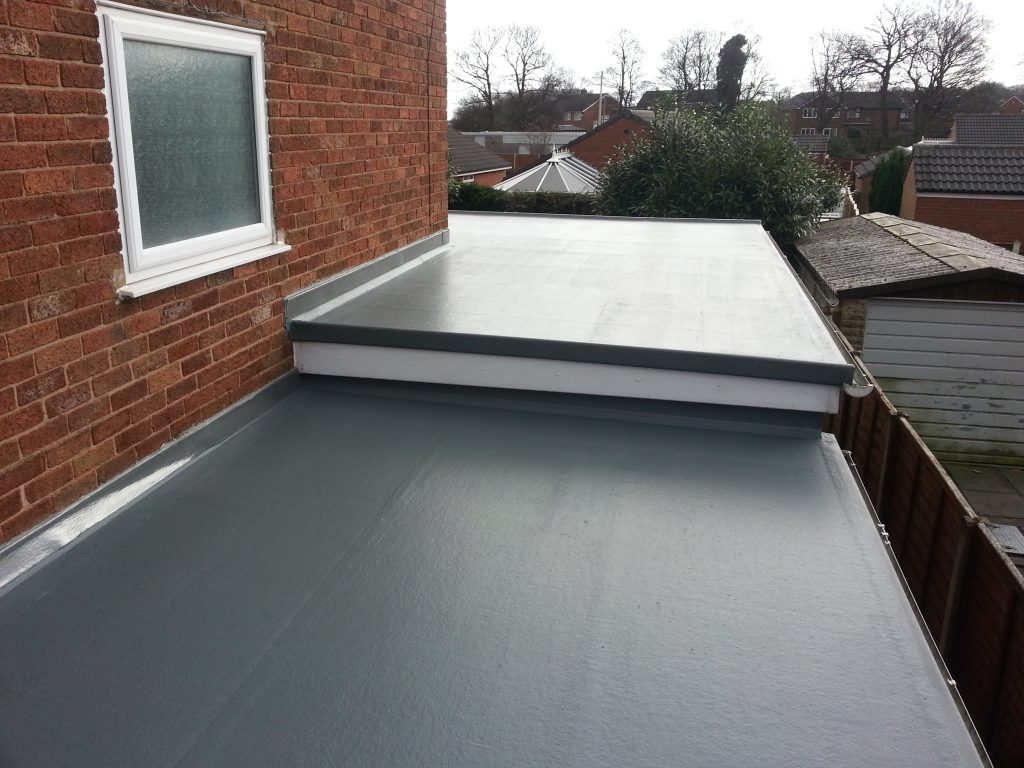 credits: GenTile
credits: GenTile
Roof Slope Dictates What Materials are Suitable
Why don’t traditional roofing materials work on flat roofs? Although theoretically you could try using shingles or tiles on a flat roof, that would almost certainly result in an immediate roof failure with numerous leaks!
Sloped roofing systems like shingles and concrete or clay tiles are designed to shed away rainwater, relying on overlapping layers that work alongside the roof’s slope to shed rainwater and snow.
Flat roofs, on the other hand, have minimal to zero pitch. If you were to try using traditional water-shedding materials like shingles, the lack of roof slope would allow rainwater to seep beneath the shingles or tiles, rotting the substrate and causing interior leaks.
 Asphalt Shingles
Asphalt Shingles
$8,500 Average Cost |
 Metal Roof
Metal Roof
$15,500 Average Cost |
 Flat Roof Membrane
Flat Roof Membrane
$11,500 Average Cost |
|
|
||
Interestingly, most flat roofs aren’t completely flat but have a low slope to divert rainwater away from the roof, ensuring good water drainage and preventing any unwanted water accumulation, which could lead to premature leaks.
Covering a flat roof requires a different set of skills compared to pitched roofs, especially when it comes to ensuring the integrity and longevity of the flat roof membrane seams.
Water, especially standing or pooling water, is the most significant threat to any poorly sealed seams in a roofing membrane. In fact, most flat roof leaks are caused by either poorly sealed membrane seams (on newer roofs) or the old membrane seams coming apart (often due to freeze-and-thaw cycles), allowing water to infiltrate the roof.
The takeaway here is that flat roofs must either be impenetrable to standing water or have a well-functioning drainage system to prevent the accumulation of water (pooling). One can either physically cover an object to make it water-resistant (like a tarp) or apply a barrier coating (like deck stain or lacquer). Similarly, flat roofs can be covered physically with materials like PVC or EPDM rubber membrane or coated with tar or spray-on silicone.
Flat Roof Installation Cost:
Flat roof replacement costs usually range from $7.50 to $14.50 per square foot with one of these systems: EPDM, TPO, or PVC membrane. The cost fluctuates based on the type of roofing material, removal and disposal of the old roof, number of layers, roof deck condition, additional required repairs, desired insulation level, presence of parapet walls and skylights, roof accessibility, and home location.
A typical residential flat roof measures between 1,000 and 1,500 square feet, giving you a total replacement cost range of $7,500 to $21,750.
Flat roofs may seem less expensive to install due to easier access compared to pitched roofs, but many roofing contractors find flat surface work more strenuous. Consider the application of insulation, adhesives or hot air welding, and types like modified bitumen requiring heat application. Installation costs for flat roofs can equal and surpass those for steeper roofs.
The professional labor prices under warranty can vary across different US markets. Here’s a rough estimate of flat roof installation costs based on the popular low-slope roofing systems:
 Asphalt Shingles
Asphalt Shingles
$8,500 Average Cost |
 Metal Roof
Metal Roof
$15,500 Average Cost |
 Flat Roof Membrane
Flat Roof Membrane
$11,500 Average Cost |
|
|
||
PVC Single-ply Membrane:
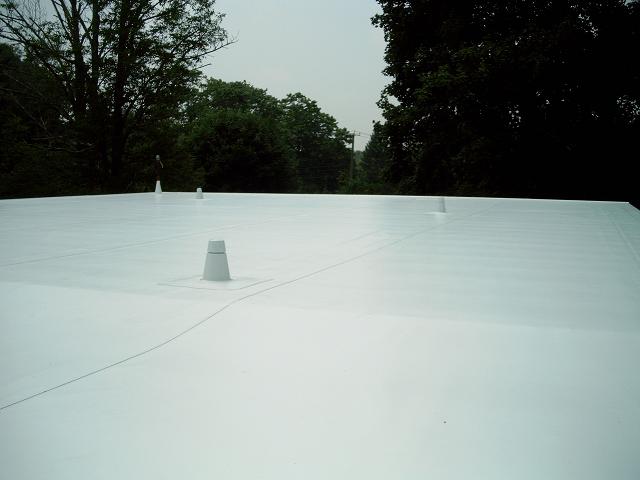
- Known for its durability, longevity, and energy efficiency, PVC, short for Polyvinyl Chloride and Vinyl, is a single-ply thermoplastic roofing membrane. The hot-air welded seams are stronger than the membrane itself.
- A PVC roof’s cost ranges between $8.50 and $14.50 per square foot installed.
EPDM Rubber:
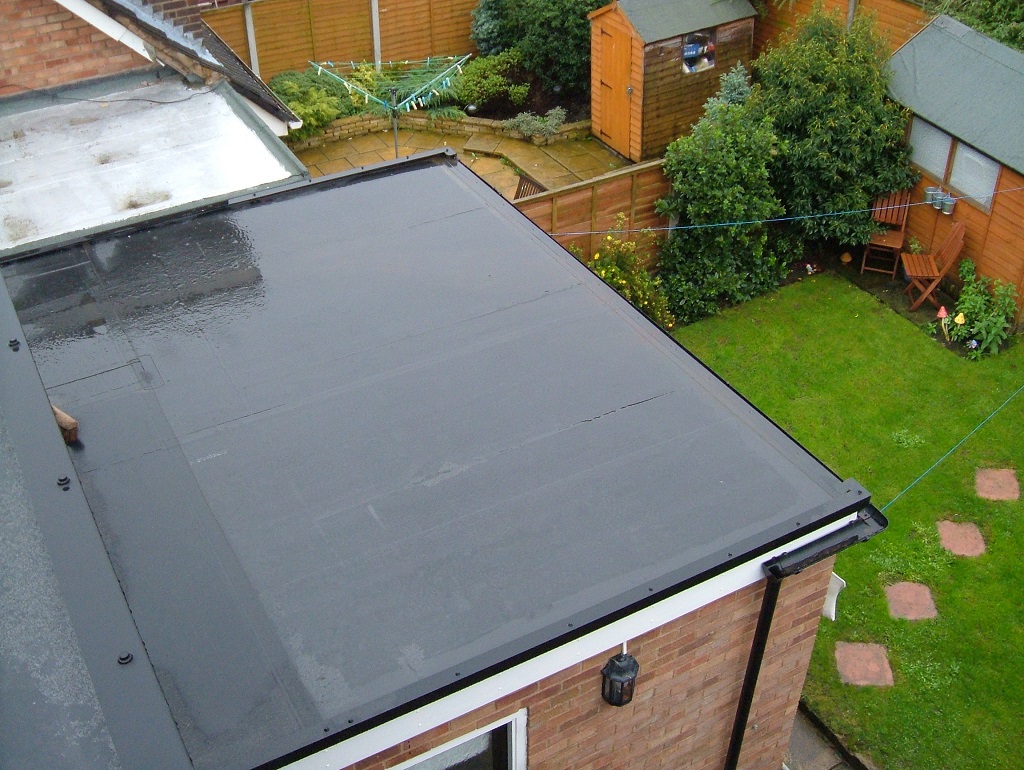 Credits: GenTile
Credits: GenTile
- EPDM, short for ethylene propylene diene terpolymer, is a common roofing membrane for residential and commercial roofs. Installation costs range from $7.50 to $12.50 per square foot.
TPO Single-ply Membrane:
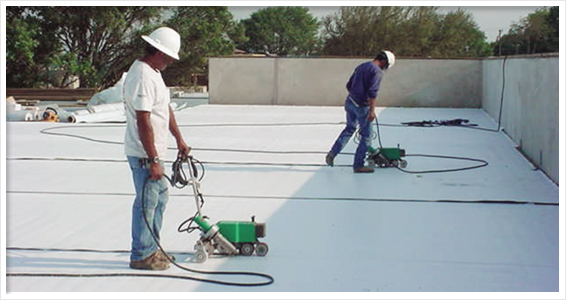
- TPO, short for thermoplastic polyolefin, offers good performance and energy efficiency. Its cost is approximately $8.50 to $13.50 per square foot installed.
Modified Bitumen:
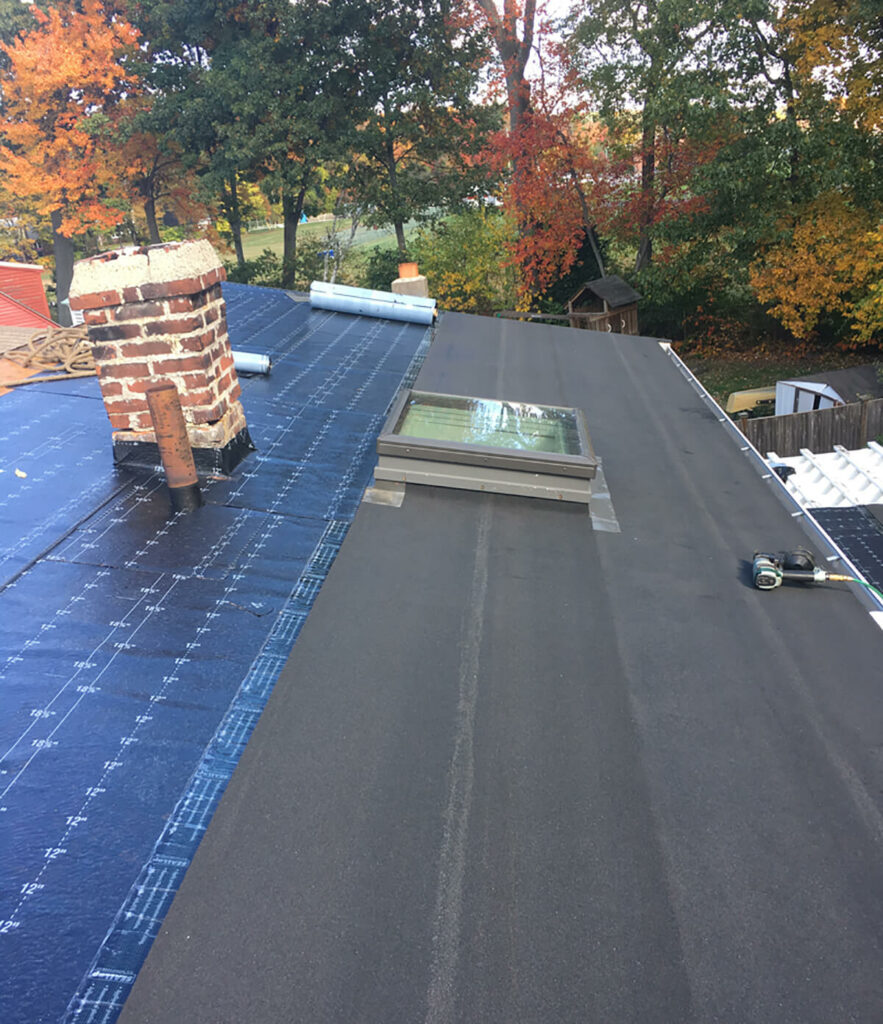 credits: Duval Roofing
credits: Duval Roofing
- Modified Bitumen, an asphalt-based roofing system, requires professional installation and costs $7.50 to $13.50 per square foot.
Built-up Roof (BUR) aka Tar & Gravel:
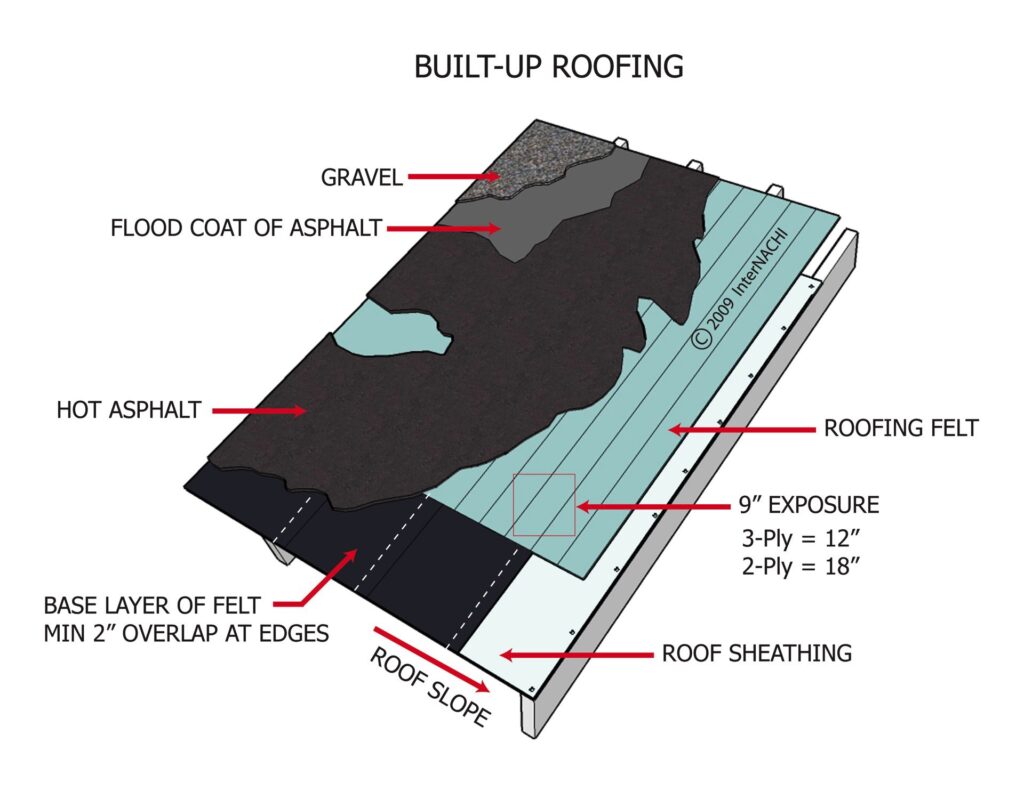 credits: How to look at a house
credits: How to look at a house
- BUR includes multiple layers of ply sheets bonded with hot asphalt. It costs $8.50 to $14.50 per square foot installed.
Spray-on Roof Coatings:
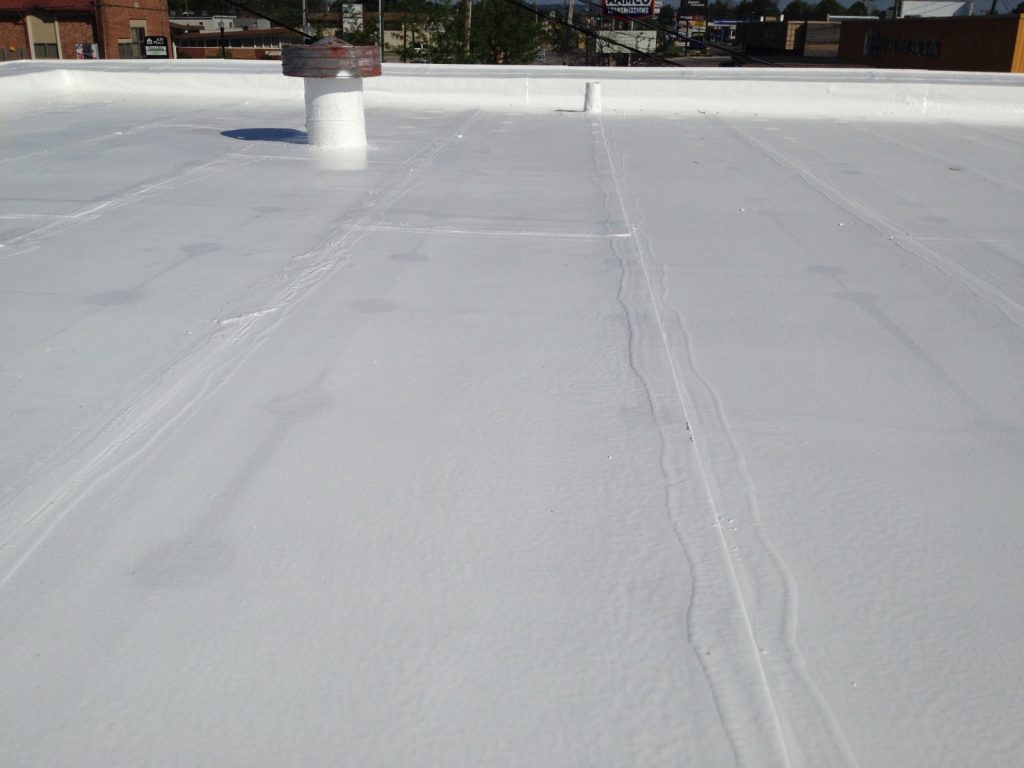
- Spray-on Roof coating extends the lifespan and improves the energy efficiency of existing roofs. Costs vary based on the material, from polyurethane costing as little as $5.00 per square foot to silicone costing up to $13.50 per square foot or more.
How long do flat roofs last?
The ideal roofing material should balance aesthetics, cost, and longevity. Lifespans of popular materials include:
- 15-30+ years for PVC
- 5-15 years for EPDM
- 15-25 years for TPO
- 10-20 years for Bitumen
- 15-25 years for Built Up Roof
- Up to 20 years for Spray-On
Why do we have flat roofs?
Flat roofs exist primarily for aesthetics and convenience. Despite the potential leak threat, their design, coupled with a slight angle or pitch, can manage water and snow, absorbing their impact until they melt. The roofing material should withstand weather extremes and standing or ponding (aka pooling) water or snow.
Need a Pro? Check out Prices from Local Roofers:
Enter your zip code:
Pros and Cons of Popular Flat Roofing Systems
The need for adequate roofing protection is universal, regardless of whether your building serves residential or commercial purposes. For flat roofs, your choice of materials typically spans across six different options:
- PVC Single-Ply Membrane
- EPDM Rubber Roofing
- TPO Roofing Membrane
- Modified Bitumen Roofing
- Built-Up Roof (BUR)
- Spray-on Roof Coatings
Metal
Flat
$15,500
$11,500
PVC Single-Ply Membrane
PVC membrane is arguably the top premium choice for residential flat roofs due to its durability and longevity. PVC boasts a long track record of success, resulting in its wide usage and acceptance. In fact, some installers specialize exclusively in PVC roofing membrane. – This preference is prominent for high-end residential flat roof replacement projects.
PVC membrane is comprised of thermoplastic layer coupled with a specially reinforced membrane, boasting superior durability, with a breaking point standing at a minimum of 300 pounds per inch—exceeding the industry norm of 200 PPI.
PVC roofs utilize heat-welding (via hot air) for seam bonding, yielding a permanent, waterproof bond that outperforms the material’s innate strength. Particularly, the white PVC membranes are energy-efficient due to their solar-reflective properties.
Installation approaches include a mechanically attached system, using hidden metal plates for fastening the concealed membrane sections to the roof deck, or a fully adhered (higher-priced) system involving direct gluing to the roof deck.
Mechanical attachment is favored for numerous residential and smaller commercial installations. Lifetime warranties are commonplace for residential and some commercial PVC installations.
While a PVC membrane boasts numerous benefits, its main disadvantage is higher upfront cost compared to less costly and more ubiquitous options like EPDM rubber.
EPDM Rubber
EPDM is known colloquially as a rubber roof, EPDM’s key edge over PVC is its substantially lower cost. EPDM and PVC usually dominate flat roofing preferences depending on your location.
However, the glued seams of EPDM can fall short in durability and longevity compared to PVC’s hot-air welded counterparts. Occasional maintenance and re-seaming may be necessary for a longer-lasting roof.
Note: Standing or ponding water must be avoided on an EPDM rubber roof due to potential seams damage. A slight slope (like tapered insulation) to divert rainwater to a well-functioning drainage system should be used.
Moreover, the darker EPDM membrane tends to absorb heat, leading to a potential surge in home energy expenses in the summer.
TPO
Another contender in the single-ply roofing membrane category, TPO comprises rubber, ethylene, propylene, and various filler materials. TPO roofs have experienced a significant rise in popularity since their introduction in the early 1990s, largely owing to their energy efficiency.
TPO membranes offer more color options, including white and light gray (along with black), as compared to their primary rivals, PVC, and EPDM. TPO is seen as providing the benefits of both EPDM and PVC—it matches the cost-effectiveness of a rubber roof while also providing durable, welded seams akin to PVC membranes.
Modified Bitumen
Single-ply roofing membranes like TPO, EPDM, and PVC, while durable, are vulnerable to punctures or impacts. Modified bitumen holds an advantage here, thanks to its multi-ply construction.
The installation begins with a base layer mechanically attached to the roof deck using plates or bars, followed by an overlapping ply adhered to the base layer with permanent adhesive. Finally, a granule top surface is added to boost aesthetics and energy conservation.
Built-Up Roofing (BUR)
More commonly referred to as tar & gravel roofs, BUR consists of alternating bitumen (asphalt, coal tar, or other adhesives) layers topped with a layer of gravel or other materials. With over a century of usage, BUR is lauded for its resilience against heavy foot traffic.
While single-ply membrane roofs may offer their own level of durability (like DeckShield from IB Roof), a gravel coating can better withstand heavy impacts. The downside, however, is the added weight, which requires bolstering the supporting structure.
Silicone Spray
This protective coating sidesteps the necessity for seams, common in membrane roofs. Despite the perceived lower cost due to its sprayed application, silicone coating remains one of the most high-priced roofing procedures.
The selection of flat roof materials is extensive, and the decision-making process can be daunting. Factors like the ease of installation and environmental impact of the manufacturing process play a role, but the most decisive factors for consumers typically revolve around cost and performance.
Here’s a quick summary of advantages and drawbacks of each material:
- PVC Membrane – Among single-ply membranes, PVC stands out for its robustness and longevity, achieved through heat-welding (not gluing or torching down).
Lifetime warranties are often offered for residential installations, albeit at a higher cost. Durability and lifespan can be improved by opting for an 80-mil membrane instead of a 50-mil one.
- EPDM – A cost-effective choice, but less resilient than PVC or TPO. EPDM rubber is susceptible to seam leaks over time as the glue used can dry out under freeze-thaw cycles.
- TPO – An energy-conserving option, featuring heat-welded membrane seams like PVC. Previous issues with TPO membranes have been mitigated through recent reformulations by manufacturers.
- Modified Bitumen – Though it features multiple layers, it absorbs heat and poses installation challenges.
- BUR – Can handle heavy foot traffic but adds considerable weight.
- Silicone spray – Provides seamless installation, but it’s a pricey option.
 Asphalt Shingles
Asphalt Shingles
$8,500 Average Cost |
 Metal Roof
Metal Roof
$15,500 Average Cost |
 Flat Roof Membrane
Flat Roof Membrane
$11,500 Average Cost |
|
|
||
How to choose the best flat roofing system for your home?
Choosing the ideal flat roofing material requires contemplating common challenges your roof might face, such as heavy traffic or a varying climate. Of course, your budget remains a crucial determinant.
So how do you navigate these choices? It’s recommended to engage with several roofing contractors who can evaluate your specific needs and the specific roofing surface requiring coating.
Whether you’re replacing an old roof or choosing a roofing system for a new construction project, your decision will be guided by these considerations. The contractor will detail your options, enabling you to make the best selection based on your budget, location, and the expertise of local companies in installing each system.
It’s essential to choose a suitable roofing material that strikes a balance between cost, aesthetic appeal, and longevity. The ultimate goal is to have a leak-free flat roof, and thankfully, there is a wide range of solutions available to achieve this.
Four important factors to keep in mind:
It’s important to note that regular maintenance is a key component of the longevity of a flat roof, regardless of the material used. Performing regular inspections and addressing small issues as they arise can prevent more significant problems down the line.
In addition to choosing the appropriate material and performing regular maintenance, here are some other factors that can influence the lifespan of a flat roof:
Installation Quality: If the roofing system is not installed correctly, it may not only reduce the lifespan of the roof but also create potential issues like leaks, poor drainage, or structural damage.
Roof Traffic: Regular foot traffic or heavy equipment on the roof can lead to accelerated wear and tear.
Climate and Weather Conditions: Harsh weather conditions, such as heavy rain, snow, high winds, or extreme temperatures, can deteriorate roofing materials faster than milder climates.
Proper Drainage System: A good drainage system is essential for a flat roof since pooling water can cause damage over time.
Closing thoughts
It’s important to consider the warranties offered by the manufacturers of low-slope roofing materials. Many provide a warranty covering defects in the material, but this often does not cover issues arising from improper installation. Some contractors offer their own installation warranties, and it can be beneficial to understand these details before making a buying decision.
If you are installing a flat roof on a new building or replacing an existing roof, you may want to consider the long-term costs as well. While some materials may be cheaper to install initially, they may require more frequent replacements or repairs, which can add up over time.
Finally, you may want to consider the environmental impact of your choice. Some materials are more eco-friendly than others, either because they are made from recycled materials, have better energy efficiency, or have a longer lifespan. For example, PVC and TPO roofs are highly reflective and can help reduce the cooling costs of the building, especially in warmer climates.
In conclusion, choosing the best flat roof material depends on a variety of factors, including the building’s usage, your budget, local climate conditions, and your long-term plans for the building. By considering all these aspects, you can make an informed decision that will serve you well for years to come.
Need a Pro? Check out Prices from Local Roofers:
Enter your zip code:
References: RoofingCalc.com
 See what local pros charge
See what local pros charge